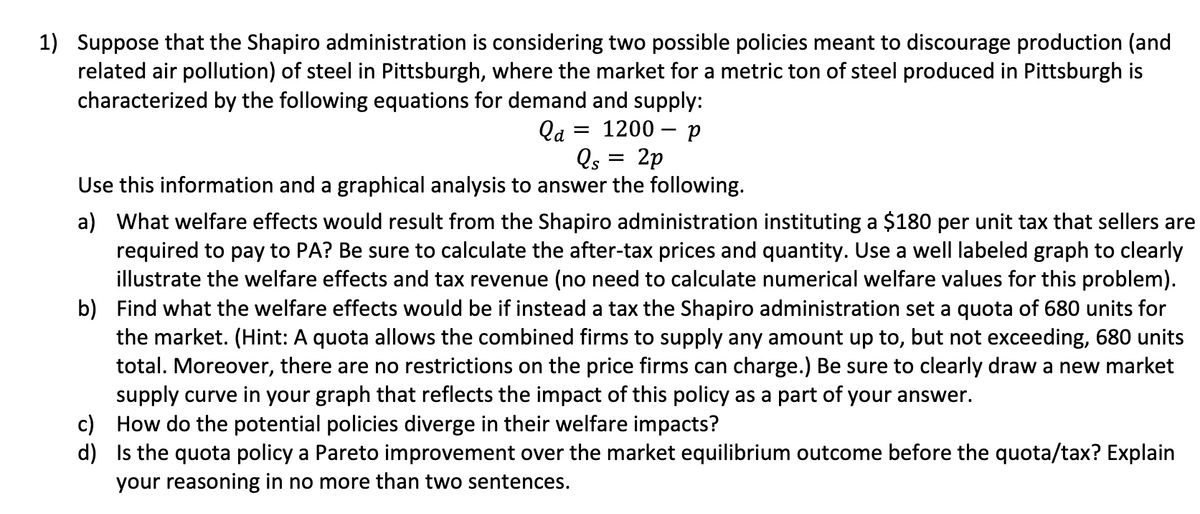Suppose that the Shapiro administration is considering two possible policies meant to discourage production (and related air pollution) of steel in Pittsburgh, where the market for a metric ton of steel produced in Pittsburgh is characterized by the following equations for demand and supply: ?? = 1200 − ? ?? = 2? Use this information and a graphical analysis to answer the following. a) What welfare effects would result from the Shapiro administration instituting a $180 per unit tax that sellers are required to pay to PA? Be sure to calculate the after-tax prices and quantity. Use a well labeled graph to clearly illustrate the welfa
Suppose that the Shapiro administration is considering two possible policies meant to discourage production (and
related air pollution) of steel in Pittsburgh, where the market for a metric ton of steel produced in Pittsburgh is
characterized by the following equations for demand and supply:
?? = 1200 − ?
?? = 2?
Use this information and a graphical analysis to answer the following.
a) What welfare effects would result from the Shapiro administration instituting a $180 per unit tax that sellers are
required to pay to PA? Be sure to calculate the after-tax prices and quantity. Use a well labeled graph to clearly
illustrate the welfare effects and tax revenue (no need to calculate numerical welfare values for this problem).
b) Find what the welfare effects would be if instead a tax the Shapiro administration set a quota of 680 units for
the market. (Hint: A quota allows the combined firms to supply any amount up to, but not exceeding, 680 units
total. Moreover, there are no restrictions on the price firms can charge.) Be sure to clearly draw a new market
supply curve in your graph that reflects the impact of this policy as a part of your answer.
c) How do the potential policies diverge in their welfare impacts?
d) Is the quota policy a Pareto improvement over the
your reasoning in no more than two sentences

Trending now
This is a popular solution!
Step by step
Solved in 5 steps with 2 images







